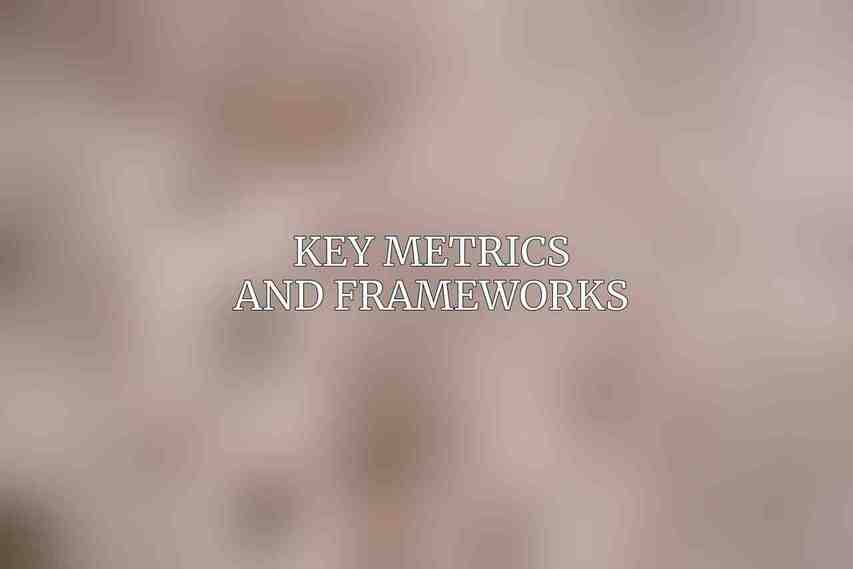Understanding the return on investment (roi) of marketing activities is crucial for businesses to make informed decisions and optimize their strategies. the ability to accurately measure roi not only helps marketers showcase the effectiveness of their efforts but also enables them to allocate resources wisely for maximum impact. however, navigating the complexities of ROI calculations and analysis can be challenging due to the multitude of metrics and channels involved.
Measuring ROI is vital for marketers as it provides quantifiable insights into the success and efficiency of their campaigns. It allows them to determine the profitability of their marketing endeavors and justify their budget allocation. Nevertheless, the process of calculating ROI comes with its own set of challenges, such as identifying the right metrics to track, attributing conversions accurately, and accounting for various factors that influence campaign performance. To tackle these challenges, marketers rely on key metrics and frameworks to assess the impact of their marketing efforts comprehensively.
Importance of ROI Measurement
ROI measurement helps marketers:
– Determine the profitability of marketing campaigns
– Allocate resources effectively based on performance data
– Justify marketing expenses to stakeholders
– Identify areas for optimization and improvement
Key Metrics and Frameworks

To evaluate marketing performance effectively, marketers utilize key metrics such as conversion rates, customer acquisition cost, customer lifetime value, and return on ad spend. Frameworks like Marketing Mix Modeling (MMM) and the Balanced Scorecard provide structured approaches to analyzing the effectiveness of marketing strategies across different channels and touchpoints.
Defining Return on Investment (ROI)
ROI is a critical metric that assesses the profitability of an investment relative to its cost. The formula for calculating ROI is:[ROI = \left( \frac{Net Profit{Cost of Investment \right) \times 100\%]
There are different types of ROI that marketers consider:
1. Financial ROI: Evaluates the monetary return generated by a campaign.2. Customer-Centric ROI: Focuses on the impact of marketing efforts on customer behavior and loyalty.3. Strategic ROI: Assesses the long-term value and competitive advantage gained from marketing initiatives.
Analytics for ROI Measurement
Utilizing advanced analytics tools and platforms is essential for tracking and analyzing the performance of marketing campaigns. By leveraging tracking platforms like Google Analytics and tools specific to social media channels, marketers can access valuable insights to measure ROI effectively. Key metrics for assessing campaign performance include website traffic, conversion rates, customer behavior, and social media engagement.
Key Metrics for Campaign Performance
- Website Traffic and Engagement: Utilize tools like Google Analytics for tracking website visits and user interactions.
- Conversion Rates: Measure the effectiveness of campaigns through conversion metrics like form submissions and sales.
- Customer Behavior: Analyze data on time spent on site and pages viewed to understand user engagement.
- Social Media Engagement: Utilize platforms like Facebook Insights to measure the impact of social media campaigns.
Measuring ROI for Different Marketing Channels
Different marketing channels require unique approaches to measuring ROI effectively. Whether it’s search engine marketing, social media, email campaigns, or content marketing, understanding the specific metrics and strategies for each channel is crucial for accurate ROI assessment.
Search Engine Marketing (SEM)
In SEM, marketers focus on:
– Conducting keyword research for targeted ad campaigns.
– Measuring conversions and determining the cost per acquisition (CPA) for each campaign.
Social Media Marketing
For social media campaigns, marketers track:
– Engagement metrics like likes, shares, and comments.
– Follower growth and the integration of customer relationship management (CRM) data.
Email Marketing
In email marketing, ROI measurement involves:
– Segmenting email lists for personalized campaigns.
– Monitoring open rates, click-through rates (CTRs), and conversion metrics.
Content Marketing
For content strategies, ROI measurement includes: Learn more about Best Strategies for Leveraging Marketing Analytics
– Analyzing blog traffic and lead generation. Check this blog on Top Marketing Analytics Tools for Smart Automation
– Using data from Google Analytics and social media platforms to track campaign performance.
Advanced ROI Measurement Techniques
To enhance ROI measurement capabilities, marketers employ advanced techniques that provide deeper insights into the effectiveness of their campaigns.
Customer Lifetime Value (CLTV) Calculations
By calculating CLTV, marketers can:
– Understand the long-term value of each customer.
– Identify opportunities for improving customer retention and maximizing revenue potential.
Multi-Touch Attribution Models
With multi-touch attribution, marketers:
– Attribute conversions accurately across multiple touchpoints.
– Determine the impact of each marketing channel on the customer journey.
A/B Testing and Optimization
A/B testing allows marketers to:
– Measure the performance of different campaign variations.
– Optimize campaigns based on data-driven insights to improve ROI.
Frameworks for ROI Evaluation

Frameworks like MMM, Marketing ROI Calculators, and the Balanced Scorecard offer structured methodologies for evaluating ROI and making informed decisions based on data-driven insights.
Marketing Mix Modeling (MMM)
MMM helps in:
– Analyzing the contributions of various marketing channels to sales.
– Understanding the effectiveness of different marketing strategies in driving revenue.
Marketing ROI Calculator
Automated tools for:
– Simplifying the calculation of financial ROI.
– Providing marketers with quick insights into the profitability of their campaigns.
Balanced Scorecard
This comprehensive framework: Read more on How to Visualize Your Marketing Data Effectively
– Measures financial, customer-focused, and operational outcomes.
– Allows marketers to assess the holistic impact of marketing efforts beyond just financial gains.
Using ROI Data for Marketing Strategy
Data-driven decision-making based on ROI insights enables marketers to refine their strategies, optimize campaigns, and allocate resources efficiently for maximum impact.
Budget Allocation and Prioritization
By funding channels with the highest ROI, marketers can:
– Maximize the profitability of their marketing investments.
– Focus resources on strategies that yield the best results.
Campaign Optimization and Refinement
Identifying areas for improvement through ROI analysis helps marketers:
– Enhance campaign performance.
– Scale successful strategies and eliminate ineffective ones.
Long-Term ROI Tracking
Monitoring performance trends over time allows marketers to:
– Make data-driven adjustments to their strategies.
– Ensure sustained success and continued ROI growth.
mastering the art of calculating ROI is essential for marketers looking to quantify the impact of their efforts accurately. By understanding the various metrics, tools, and techniques available for ROI measurement, marketers can make informed decisions, optimize their strategies, and drive sustainable growth in a competitive digital world.
Understanding the Benefits of ROI in Marketing: Learn more about Mastering Conversion Rate Optimization with Analytics
“ROI measurement is not just about tracking numbers; it’s about understanding the true value and impact of marketing initiatives on business outcomes.”
As the marketing world evolves, embracing data-driven approaches to ROI measurement will be crucial for staying ahead of the curve and adapting to changing consumer trends and technological advancements in the future. By leveraging the insights gained from ROI analysis, marketers can continuously refine their strategies, maximize their impact, and achieve long-term success in an ever-changing digital world.
Frequently Asked Questions
What is ROI?
ROI stands for Return on Investment. It is a performance measure used to evaluate the efficiency or profitability of an investment.
Why is calculating ROI important for marketers?
Calculating ROI helps marketers determine the profitability of their marketing campaigns and make informed decisions on where to allocate resources.
How do you calculate ROI?
ROI is calculated by dividing the net profit of the investment by the initial cost of the investment, and then multiplying the result by 100 to get a percentage.
What factors should marketers consider when calculating ROI?
Marketers should consider all costs associated with the investment, such as advertising expenses, production costs, and overhead costs, as well as the revenue generated from the investment.
How can marketers improve their ROI?
Marketers can improve their ROI by optimizing their campaigns, targeting the right audience, tracking and analyzing data, and experimenting with different strategies to see what works best.

